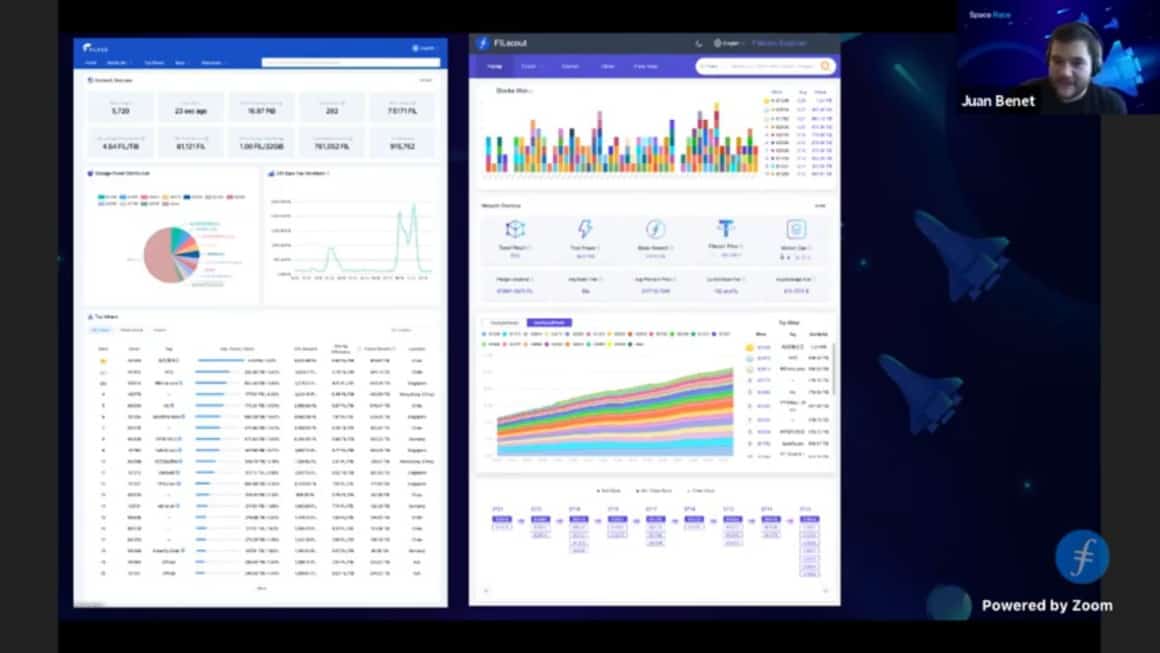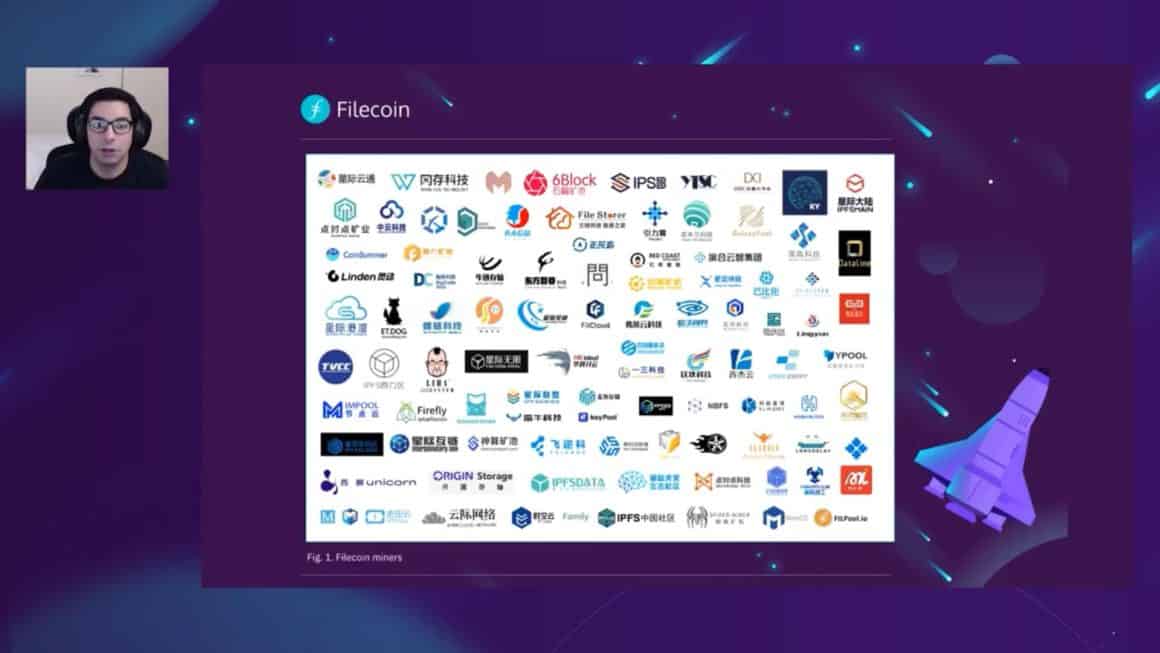Filecoin’s mainnet aims for the clouds of Web 3.0
Web 2.0 gave users the power to engage with other users and contribute content to the network, but data is still stored in centralized databases. Web 3.0 wants to end all of that.
Decentralized storage network Filecoin’s mainnet inches closer as the newly adjusted September 14 to 28 launch window hints at the genesis of data storage in Web 3.0.
Built by Protocol Labs on top of its distributed file system, InterPlanetary File System (IPFS), a peer-to-peer network for storing and sharing data, Filecoin enables storage providers from around the world to connect with users that are looking to rent unused space.
“Filecoin is the medium of exchange for this decentralized market,” said Protocol Labs CEO Juan Benet. “Users use Filecoin to hire the network to store their data, and storage providers get paid in filecoin which scales with how much storage they add and how close they are to the user.”

Image: Filecoin
In the era of Web 2.0, users connected online to engage in social interactions and contribute to user-generated content. Web 2.0 also gave birth to interactive business opportunities such as AirBnB, which enables private homeowners to rent out their properties to those seeking alternatives to hotels.
But even with the evolving technology and growing need for secure methods to store information, data is still dominantly stored in centralized databases, managed by the likes of Google, Amazon and Microsoft. While complete decentralization of the world’s data may not be achieved anytime soon, the highly anticipated launch of the upcoming Filecoin mainnet could be the beginning of the true decentralization of storage nodes around the world.
“The wonder of the web is that the people have participated — in the last 25 years — sharing so much about themselves, but unfortunately, we built it on a very fragile infrastructure,” said Internet Archive founder Brewster Kahle.
Why fix something that’s not broken?
Despite ever greater global demands for more secure and efficient data storage protocols, the existing cloud data storage services provided by tech mammoths like Google and Amazon remain popular and seem to work fine for most.
A June 2020 study conducted by technology intelligence platform Snow Software showed that 76% of the 250 IT leaders from mid-sized companies surveyed had increased their use of cloud platforms such as Microsoft Azure and Amazon Web Service. This increase is higher than that of other applications that have been booming since the coronavirus outbreak. For context, among the same group of IT leaders, 55% reported increasing their use of business communication platforms such as Slack and 52% increased their use of cloud-based video conferencing applications such as Zoom.
While extreme threats posed by centralized databases were once thought of as the stuff of imagination, whistleblower Edward Snowden’s revelations about the U.S. government’s mass surveillance of ordinary Americans and the scandal involving the political consultancy Cambridge Analytica accessing 87 million Facebook users’ data have intensified calls for decentralized alternatives to data storage.

“We built IPFS — a protocol to remove those central points of failure, to improve the resilience of the internet and the web, and to give information a stronger sense of permanence,” Benet said.
Data stored in data centers are projected to reach 1.3 zettabytes (ZB) in 2021. For comparison, 1 ZB is equal to 1 billion Terabytes (TB) or 1,000 Exabytes (EB). The projection also highlights a 36% compound annual growth rate from 2016 — when 286 EB were stored in data centers.
With the birth of key blockchain protocols such as Bitcoin and Ethereum, decentralized networks have been established to allow anyone to use their computers to act as the network’s node and earn cryptocurrencies as rewards. Applying fundamentals of blockchain technology to data storage, Filecoin aims to provide a decentralized storage market to pave the way into the Web 3.0 era.
“We realize that we can use the same kind of incentive structures of Bitcoin to create a decentralized storage network,” Benet said. “There is a massive amount of unused latent storage out there.”
Including Filecoin, TRON, Sia, Swarm and Storj also provide decentralized file-storage services.
This generation’s “Space Race” is a bit different
To stress-test the Filecoin network, a collaborative competition known as Space Race has been prepping miners to run the decentralized storage network since August 24. The race to build “space” will run for three weeks.
Data miners from around the world are currently racing to onboard storage capacity through a decentralized network of drives. Not only are these miners incentivized by the 4 million Filecoins waiting to be rewarded, but the Space Race is set up to introduce an immutable, decentralized network.
“So we take a market with very dominant cloud storage providers today, and allow all sorts of data storage providers to be able to compete effectively with the scale and reliability and price efficiency of the larger players,” said Filecoin’s ecosystem lead Colin Evran. “That allows anyone from smaller mining rigs to really advanced data centers around the world to plug into the network, and together, provide a new robust foundation for humanity’s information.”

Speed isn’t everything in this race, as miners will be tested by bots to detect storage reliability and connectivity. Major mining companies are currently competing against teams composed of as few as one person.
“I was pinning my data on Temporal – I thought it was pretty cool, but at the same time, I still had to rely on this third-party company so it just didn’t feel fully decentralized,” says California-based Mike newton who is representing his two person team, Corvo Coin.
As of publication, Space Race has accumulated 101 Petabytes (PiB) of data, which is equivalent to 101,000 Terabytes.
Over the next three weeks, real-time updates and exclusive behind-the-scenes contents from Space Race can be found right here — on Forkast.News.